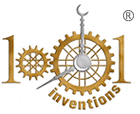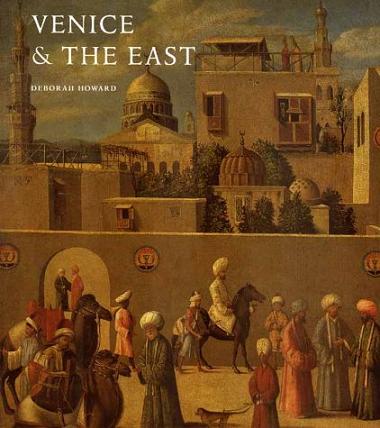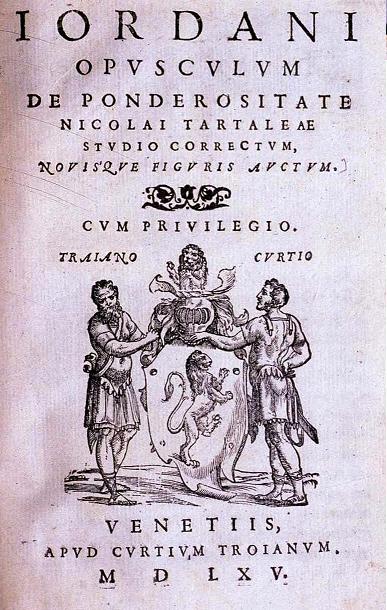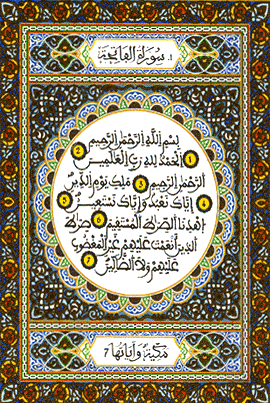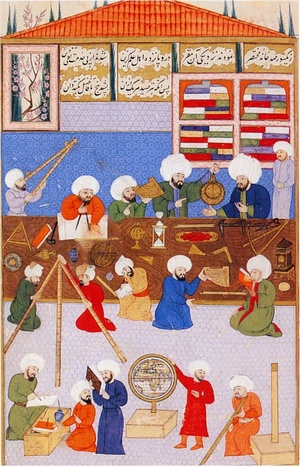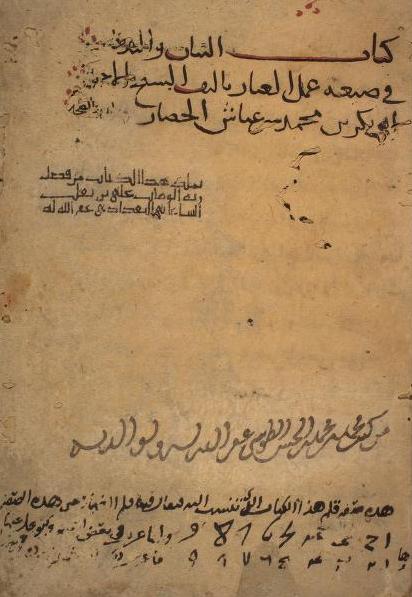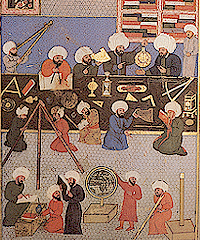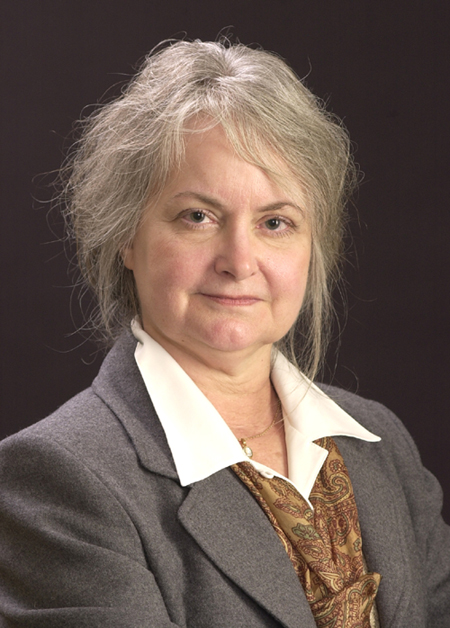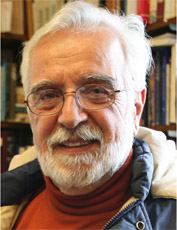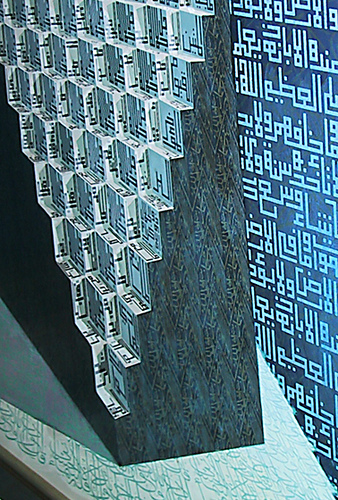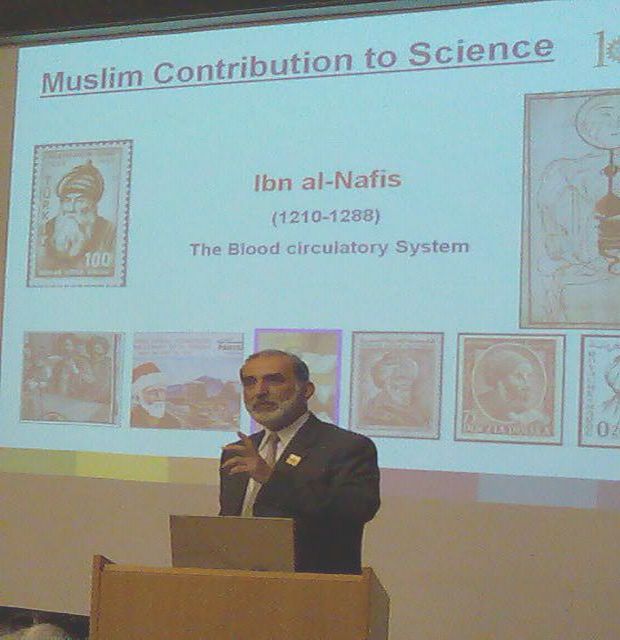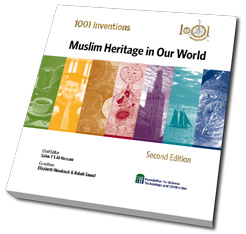by CATE DEVINE (The Scottish Herald)
October 24 2007
We all know that thousands of familiar items were invented, discovered or created by Scottish ingenuity. The television, Tarmac, penicillin, radar and, more recently, Dolly the sheep are just some of them.
But how many of us realise that coffee, clocks, deodorant, the fountain pen, libraries, sofas, surgical instruments, toothpaste, chemistry, herbal medicine, town planning, vaccinations and even the crankshaft - among thousands of other inventions - have a claim to originate in the Muslim world between the seventh and seventeenth centuries?
Too many of us in the west are unaware of the enormous contribution Islamic scholars have made to our cultural and social life. In an attempt to shed light on this largely ignored "golden age" of scientific innovation, Salim al Hassani, chairman of the Foundation for Science, Technology and Civilisation and emeritus professor at Manchester University, has created an interactive exhibition called 1001 Inventions, which opened yesterday at the Glasgow Science Centre.
The Greeks, Romans, Chinese and Babylonians also have claims to incredible creativity, but al Hassani's point is that the Islamic world's contribution is often sidelined. "If it had not been for Muslim inventions, we would not have had the Renaissance, nor present-day civilisation.
"Western history books tend to jump from Greek times to Newton and Einstein, so there's a huge gap of knowledge that needs to be filled in the interests of social and cultural cohesion, and even world peace."
This 1000-year gap is a fluke of history, not a conspiracy, he says. However, he believes the time has come for recognition and acknowledgment. "Because we have tended to see Islam as the enemy of the west, as an alien culture, society and belief system, we have tended to ignore or erase its great relevance to our own history."
The exhibition has a message for non-Muslims and Muslims alike. "In the post-9/11 era there have been tensions in world relations," says al Hassani. "I want non-Muslims to recognise their neighbours, but there is also a message here for young Muslims in Britain: recognise the contribution of your ancestors. These people expressed their religiosity through beneficial contributions to society and humanity.
"Young Muslims should also learn that great inventors were men and women, Muslim and non-Muslim, working in harmony together. This track record of co-operation over the centuries, although deeply rooted within early Muslim society, seems to have been forgotten. The 1001 Inventions project taps directly into that tradition by seeking to develop a better understanding between peoples and cultures."
Professor Robert Hillenbrand, director of the Centre for the Advanced Study of the Arab World, based at Edinburgh University, also believes the exhibition is timely. "The Arab world is one of the big four global players today, along with Russia, China and Japan," he says. "Scottish students are still choosing to learn French, but who do you think is going to run the planet in 100 years' time? Not the French."
Here, then, are 10 of the inventions for which we should thank the Muslim world
Camera obscura
Although the Greeks had written treatises on optics, it was the ninth-century polymath al Kindi who first laid down the foundations of its modern study, discussing how light rays came in a straight line and the influence of distance and angle on sight.
This was built on by Ibn al Haitham in the tenth century, and his Book of Optics is still quoted by professors 1000 years on. During his practical experiments he used the term al Bayt al Muthlim, which was translated into Latin as "camera obscura". His Book of Optics was translated into Latin by the medieval scholar Gerard of Cremona, and this had a profound impact on the thirteenth-century big thinkers such as Roger Bacon and Witelo, and even on the later works of Leonardo da Vinci.
Coffee
More than 1200 years ago, legend has it that coffee was discovered by Ethopian Arab goatherds when they noticed their goats became more lively after eating certain berries. These berries were boiled, and became known as al Qahawa. It was a Turkish merchant, Pasqua Rosee, who first brought coffee to the UK in 1650.
Clocks
In 1206, the mechanical engineer al Jazari, working for the Urtuq kings of Diyarbakir in Turkey, was commissioned to write a book on engineering. It described 50 mechanical devices, including the first water-powered astronomical clock, a programmable humanoid robot and the crankshaft.
Toothbrushes and toothpaste
In the sixth century, the Prophet Muhammad is described as believing bad breath and food bits in your teeth were unhygienic, and scrubbing his teeth with a twig of miswak before each prayer. Although the Chinese can lay claim to a sixteenth-century version of the toothbrush, miswak is still used today - and a Swiss pharmaceutical company has since discovered that it has antibacterial properties.
Deodorants
In his tenth-century medical encyclopaedia al Tasrif, the physician and surgeon al Zahrawi included a chapter devoted to "cosmetology" and elaborated on perfume and perfumed stocks, rolled and pressed in special moulds - like today's roll-on deodorants.
Libraries
Although the Greeks and Romans had houses of scrolls open to the public, they were not lending libraries. Muslims began producing books in the eighth century because they knew how to make paper and were encouraged to record all their experiments. The Abbasid Caliph al Ma'mun paid translators the weight of each book in gold that they translated from Greek into Arabic. This produced a vast stack of books. Mosque libraries were called dar al-kutub, or the house of books.
Chemistry
Many scholars give the title of the father of chemistry to Jabir, or Gerber, ibn Hayyan, born around 722, the son of a druggist from Iraq. His use of experimental method in alchemy is seen as influential to this day.
Fountain pens
Before pens as we know them today came other writing instruments, including the qalam or reed pen. The most sought-after reeds came from the coastal lands of the Arabian Gulf. Each style of script required a different reed, cut at a specific angle. Calligraphers usually made their own inks and kept the recipes secret.
The language of Arabic calligraphy belongs to the family of ancient semitic languages, the most famous of which are Kufic and Naskh. The Kufic script comes from the city of Kufa, Iraq, where it was used by seventh- century scribes translating the Koran. Calligraphy is still used today for writing the Koran.
Surgical instruments
In his medical encyclopaedia, the aforementioned al Zahrawi introduced a staggering collection of more than 200 surgical tools. Their design was so precise that they have had only a few changes in 1000 years, and it was these illustrations that laid the foundations for surgery in Europe.
Post and mail
In fourteenth-century India, couriers took messages to the Muslim sultan sitting in Delhi. A man carrying a rod with copper bells on the top would sprint as fast as he could for one-third of a mile, and on hearing the bells the next man would get ready to take the mail. It took only five days for a message to get from the eastern edge of India to the capital.


